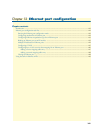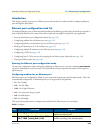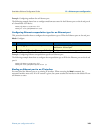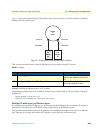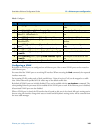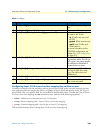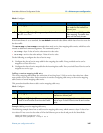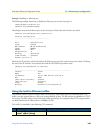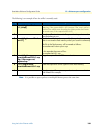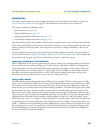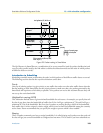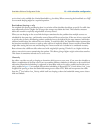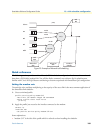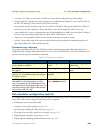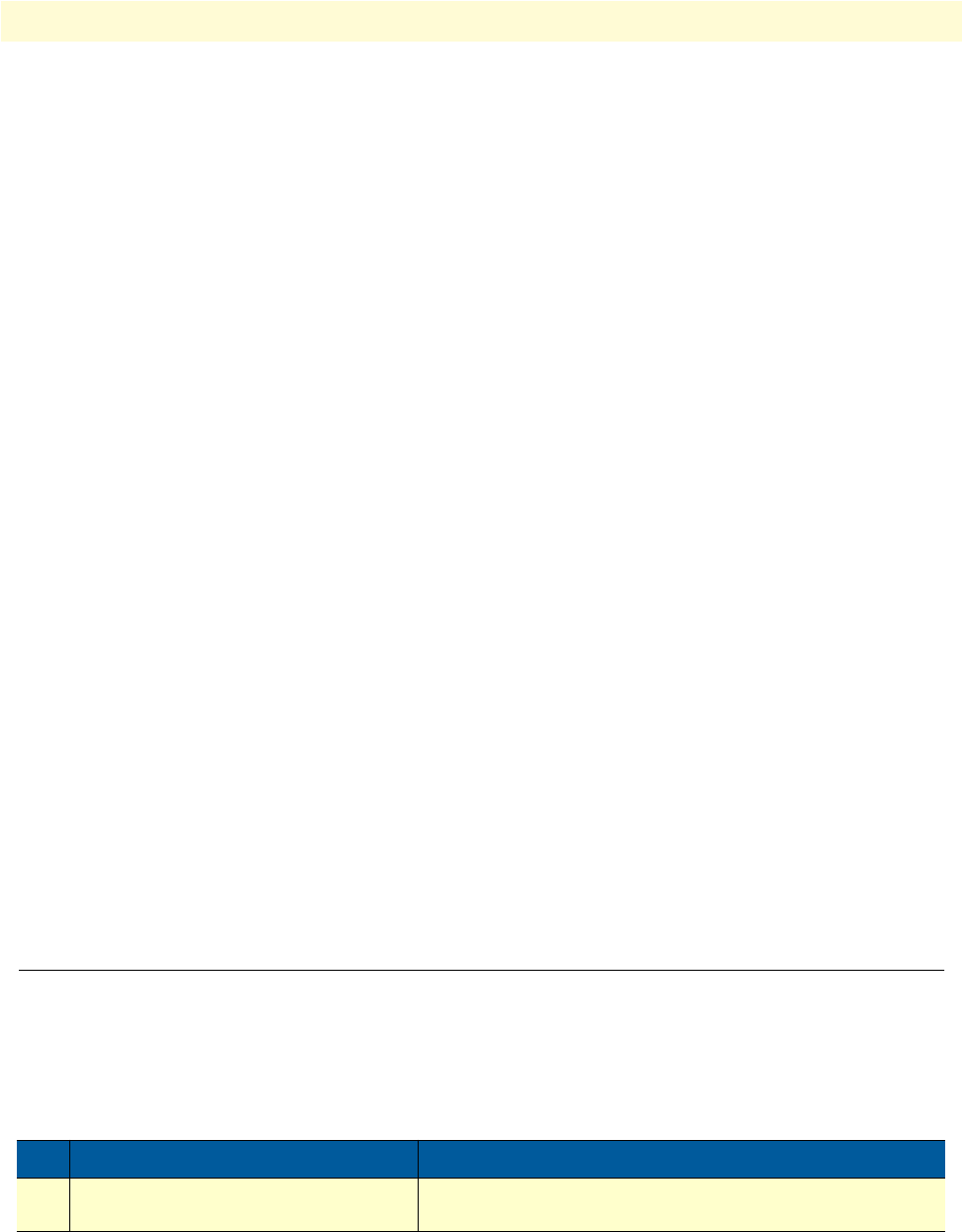
Using the built-in Ethernet sniffer 149
SmartWare Software Configuration Guide 12 • Ethernet port configuration
Example: Disabling an Ethernet port
The following example shows how to disable the Ethernet port on slot 0 and port 0.
node(cfg)#port ethernet 0 0
node(prt-eth)[0/0]#shutdown
Checking the state of the Ethernet port on slot 0 and port 0 shows that the interface was closed.
node(prt-eth)[0/1]#show port ethernet 0 1
Ethernet Configuration
-------------------------------------
Port : ethernet 0 0 1
State : CLOSED
MAC Address : 00:30:2B:00:1D:D4
Speed : 10Mbps
Duplex : Half
Encapsulation : ip
Binding : wan@router
Frame Format : standard
Default Service: 0
Moreover the IP interface, which is bound to the Ethernet port on slot 0 and port 0 gets also closed. Checking
the state of the IP interface wan indicates this with the CLOSED for parameter state.
node(prt-eth)[0/1]#show ip interface
…
------------------------------------------------------------
Context: router
Name: wan
IP Address: 172.17.100.210 255.255.255.0
MTU: 1500
ICMP router-discovery: enabled
ICMP redirect: send only
State: CLOSED
Binding: ethernet 0 0 1/ethernet/ip
…
Using the built-in Ethernet sniffer
The software contains a built-in sniffer, which can be used to capture data packets on Ethernet ports. The
sniffer saves the captured data to a file in the systems flash file system. The file can later be uploaded via TFTP
for viewing. The files can be viewed with many sniffer applications, for example, Ethereal. The capture buffer
can hold a maximum of 1000 packets or 100kByte of data.
The sniffer is controlled via the following CLI command:
Command Purpose
[name] (cfg)# [no] sniff ethernet
<slot> <port> [wrap]
Enable/disable the sniffer



